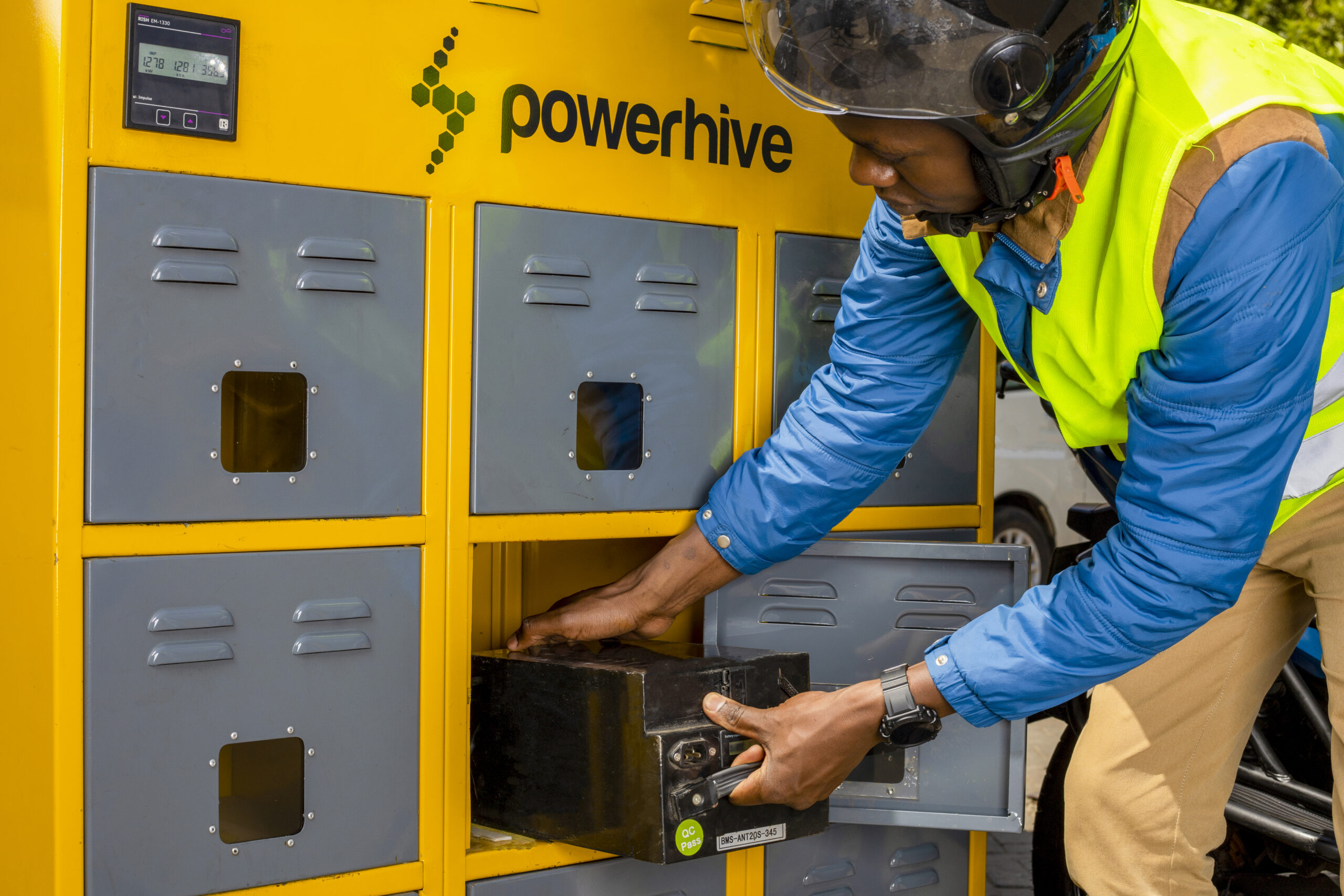Sign up for daily news updates from CleanTechnica on email. Or follow us on Google News!
Powerhive, a pioneering clean energy company that is now at the forefront of e-mobility solutions in Kenya, started with mini grids in Kisii, in western Kenya, in the year 2011. Powerhive then pivoted to electric vehicles in 2019. Powerhive settled on EVs after experimenting with several use cases of the productive use of power from mini grids. This focus on EVs led to Powerhive becoming the first company to pilot electric motorcycles and the battery swap ecosystem in Kenya. Powerhive was also the first company to have its fleet cover half a million kilometers on Kenyan roads.
Powerhive is now on the third generation of its electric motorcycle, called the Spark. Powerhive is now ramping up production and deliveries of the Spark electric motorcycles. The company says its strides in the EV space reflect a vision for a cleaner, greener future while pioneering accessible, efficient, and sustainable mobility solutions for communities in Kenya. Late last year, Powerhive unveiled a strategic collaboration with Mobius Motors, a renowned vehicle manufacturing partner based in Nairobi. This partnership marks a significant milestone in Powerhive’s ongoing efforts to advance the sustainable mobility landscape across the region. Mobius Motors designs, manufactures, assembles, and sells vehicles for the African mass market.
Powerhive says the cornerstone of this partnership is the establishment of a dedicated bonded warehouse within the Mobius Motors facility, designed for the exclusive assembly of Powerhive’s Spark electric motorcycles and capable of producing up to 150 Spark bikes per factory shift. This development aligns seamlessly with Powerhive’s mission to revolutionize clean and efficient transportation options, facilitating a more accessible and eco-conscious future for riders.
Powerhive’s flagship showroom is on Ngong Road, a major road in Nairobi where it has partnered with Lexo Energy, one of the large retail fuel firms in Kenya. This flagship showroom is entirely solar powered by Powerhive’s 70kWp solar system. This design ensures that the grid-tied solar PV system meets the energy requirements of the Lexo Station’s fuel pumps, the convenience store, café, carwash, and the battery swap station for the Spark electric motorcycles during the day. Powerhive was the first licensed private utility in Kenya in 2015, and is therefore leveraging on all of this experience with this current site and other upcoming solar microgrids linked to its electric mobility business.

Powerhive’s swap stations are fully automated, and each battery swapping cabinet houses up to 9 batteries. Riders access the batteries after scanning a QR code. Powerhive has 13 battery swap stations at the moment through strategic partnerships with Shell, Lexo, and Rubis petrol stations. Powerhive has started linking some strategic routes such as Ngong to Riuru, adding several swap stations along these routes for riders to be able to access fully charged batteries seamlessly. Powerhive now has over 60 motorcycles on the road and has taken a utility/energy service provider approach, where it sells the motorcycle and then offers riders an energy-as-a-service platform where the riders rent the batteries.
Here is a summary of Powerhive’s Gen 3 Spark electric motorcycle specifications and the energy access plan:
- 4kW motor
- 3kWh battery
- 80km to 100km on a full battery
- Riders get unlimited swaps for 450 shillings per day, and riders save about 900 shillings per day as they were spending 1500 shillings per day just on fuel
There are close to 50 startups at various stages of development in East Africa’s electric motorcycle ecosystem. Powerhive is banking on its track record in Kenya and experience in mini grids, associated hardware, and software expertise to stand out and help lead the transition to electric mobility in Kenya. This track record will help it in the quest to attract the right strategic partnerships with as many of the current players in Kenya’s electric motorcycle sector as possible, and also with investors to unlock the critical mass and the right level of capital needed to scale the electric vehicle industry to the level needed to start displacing a significant number of ICE vehicle sales.
Images courtesy of Powerhive
Have a tip for CleanTechnica? Want to advertise? Want to suggest a guest for our CleanTech Talk podcast? Contact us here.
Latest CleanTechnica TV Video
I don’t like paywalls. You don’t like paywalls. Who likes paywalls? Here at CleanTechnica, we implemented a limited paywall for a while, but it always felt wrong — and it was always tough to decide what we should put behind there. In theory, your most exclusive and best content goes behind a paywall. But then fewer people read it!! So, we’ve decided to completely nix paywalls here at CleanTechnica. But…
Thank you!
CleanTechnica uses affiliate links. See our policy here.




